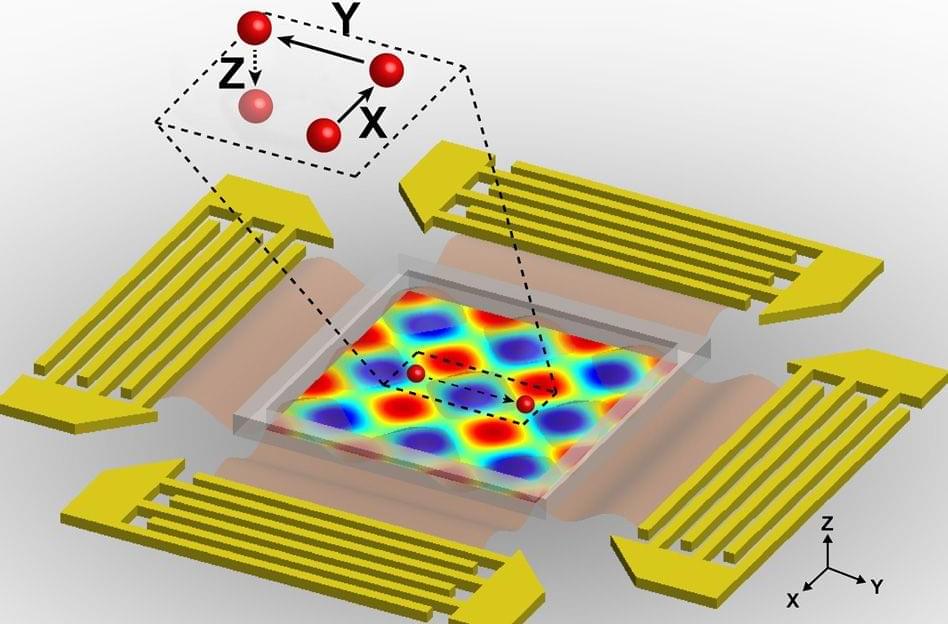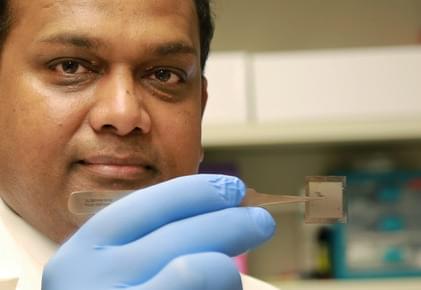Join the discussion on this paper page.



AI processing can take a huge amount of computing power, but by the looks of this latest joint project from the Jülich Supercomputing Center and French computing provider Eviden, power will not be in short supply.
“But can it run Crysis” is an old gag, but I’m still going to see if I get away with it.

Engineers at MIT, Penn State University, and Carnegie Mellon University have devised a way to manipulate cells in three dimensions using sound waves. These “acoustic tweezers” could make possible 3D printing of cell structures for tissue engineering and other applications, the researchers say.
Designing tissue implants that can be used to treat human disease requires precisely recreating the natural tissue architecture, but so far it has proven difficult to develop a single method that can achieve that while keeping cells viable and functional.
“The results presented in this paper provide a unique pathway to manipulate biological cells accurately and in three dimensions, without the need for any invasive contact, tagging, or biochemical labeling,” says Subra Suresh, president of Carnegie Mellon and former dean of engineering at MIT. “This approach could lead to new possibilities for research and applications in such areas as regenerative medicine, neuroscience, tissue engineering, biomanufacturing, and cancer metastasis.”

To try everything Brilliant has to offer—free—for a full 30 days, visit https://brilliant.org/Inkbox. The first 200 of you will get 20% off Brilliant’s annual premium subscription.
I designed my own 16-Bit Computer in Microsoft Excel without using Visual Basic scripts, plugins, or anything other than plain Excel. This system on a spreadsheet is based off of a custom Instruction Set Architecture that has a total of 23 instruction mnemonics and 26 opcodes.
The main design of the CPU is broken into a fetch unit, control unit, arithmetic logic unit, register file, PC unit, several multiplexers, a memory control unit, a 128KB RAM table, and a 128×128 16-color display.
Try it out down below:
https://github.com/InkboxSoftware/excelCPU
This video was sponsored by Brilliant.
computer chip by MITHUN T M from Noun Project.
Memory by Alvida from Noun project.
Calculator by Uswa KDT from Noun Project.

With a quick pulse of light, researchers can now find and erase errors in real time.
Researchers have developed a method that can reveal the location of errors in quantum computers, making them up to ten times easier to correct. This will significantly accelerate progress towards large-scale quantum computers capable of tackling the world’s most challenging computational problems, the researchers said.
Led by Princeton University ’s Jeff Thompson, the team demonstrated a way to identify when errors occur in quantum computers more easily than ever before. This is a new direction for research into quantum computing hardware, which more often seeks to simply lower the probability of an error occurring in the first place.

Jan 29 (Reuters) — The first human patient has received an implant from brain-chip startup Neuralink on Sunday and is recovering well, the company’s billionaire founder Elon Musk said.
“Initial results show promising neuron spike detection,” Musk said in a post on the social media platform X on Monday.
Spikes are activity by neurons, which the National Institute of Health describes as cells that use electrical and chemical signals to send information around the brain and to the body.

Year 2017 face_with_colon_three
Tissue Nanotransfection (TNT), that can generate any cell type of interest for treatment within the patient’s own body. This technology may be used to repair injured tissue or restore function of aging tissue, including organs, blood vessels and nerve cells.
“By using our novel nanochip technology, injured or compromised organs can be replaced. We have shown that skin is a fertile land where we can grow the elements of any organ that is declining,” said Dr. Chandan Sen, director of Ohio State’s Center for Regenerative Medicine & Cell Based Therapies, who co-led the study with L. James Lee, professor of chemical and biomolecular engineering with Ohio State’s College of Engineering in collaboration with Ohio State’s Nanoscale Science and Engineering Center.
Researchers studied mice and pigs in these experiments. In the study, researchers were able to reprogram skin cells to become vascular cells in badly injured legs that lacked blood flow. Within one week, active blood vessels appeared in the injured leg, and by the second week, the leg was saved. In lab tests, this technology was also shown to reprogram skin cells in the live body into nerve cells that were injected into brain-injured mice to help them recover from stroke.

